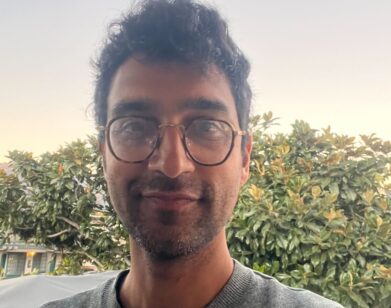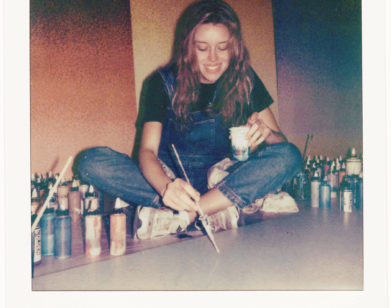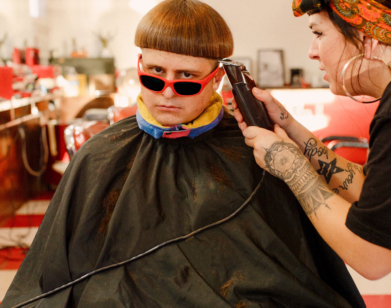Leslie Bembinster Shows Us How to Crystalize Proteins and Boost Our Immunity
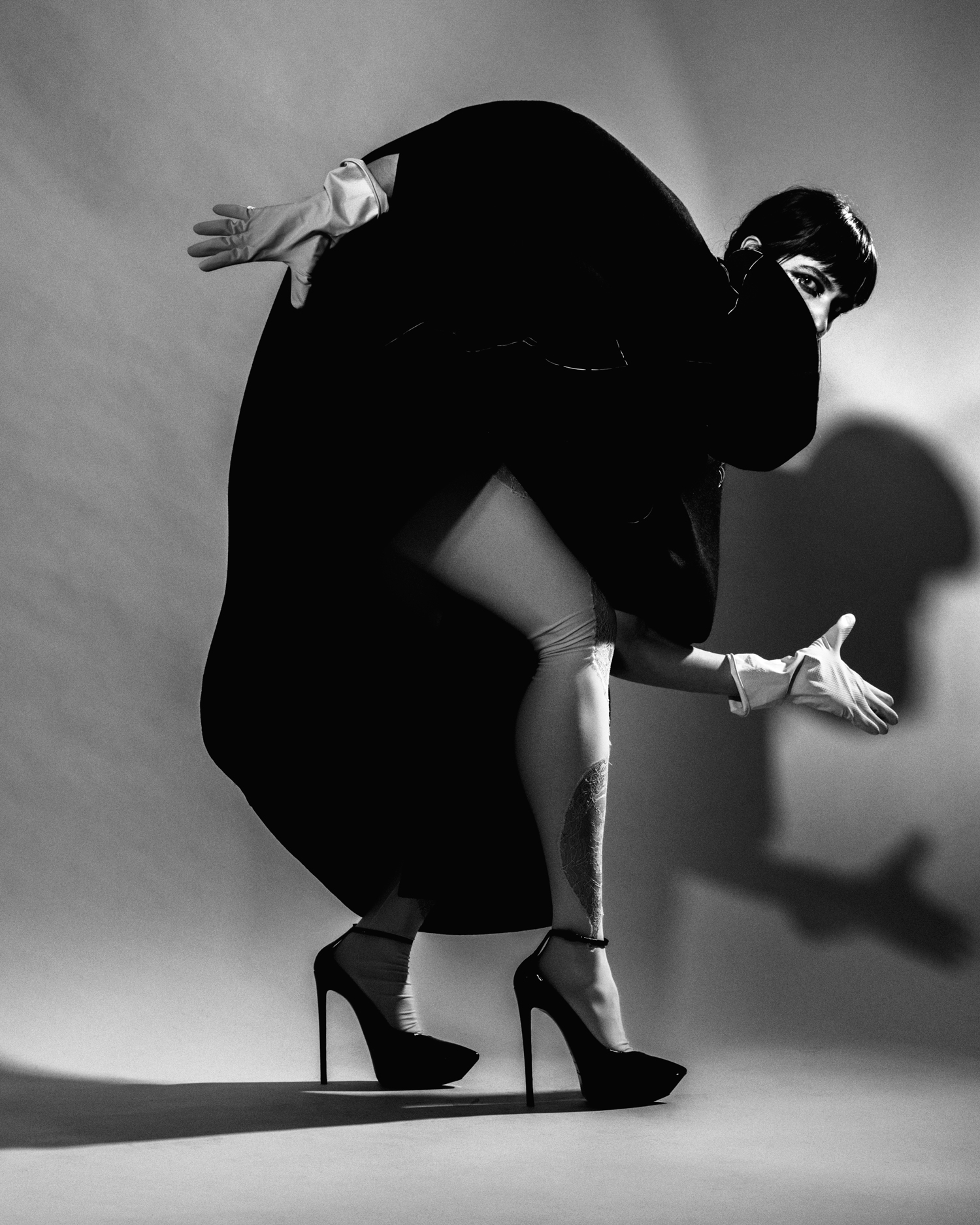
Coat by MAISON MARGIELA. Gloves STYLIST’S OWN. Tights by VERSACE. Shoes by SAINT LAURENT BY ANTHONY VACCARELLO.
Leslie Bembinster likes to joke that she’s modeled both genes and jeans, and, as a molecular biologist-turned-fashion model, she’s not wrong. The Chicago native has clocked years in the lab, publishing studies such as Proinflammatory Cytokines Enhance Estrogen-dependent Expression of the Multidrug Transporter Gene ABCG2 through Estrogen Receptor and NF B Cooperativity at Adjacent Response Elements. And even though her modeling career has taken off, the science nerd within her is alive and well—at least according to this helpful guide to making visible 3D models of infinitesimal material.
———
Step 1: Pick your protein of interest. Sometimes it can be a stubborn jerk in its native state, but a simple genetic-engineering makeover can fix that with minimal DNA tweaking. Be proudly pro-GMO, because how else would you expect to get rid of those pesky n-linked glycosylation sites?
Step 2: Command a species to do your bidding. You’re going to want a massive amount of soluble protein, so choose an appropriate workhorse species to manufacture loads of it. Consider the classic E. coli, but if you’re living that Howard Hughes lifestyle, choose insect cells instead.
Step 3: Collect and purify your protein—separate out all of the extra junk until you have only one type of molecule in liquid form, then introduce its target binding partner to get a protein complex.
Step 4: Grow your protein complex as crystals. With bated breath, you’ll likely spend months trying out myriad salt solutions, nucleation states, and water vaping in order to get a supersaturated solution for your protein complex to bud from. Make sure to check out your crystals under a microscope. They will form in all shapes and sizes, but perfect geometric symmetry is key. If your crystals clump into a kind of majestic liger shape, sorry, those are trash.
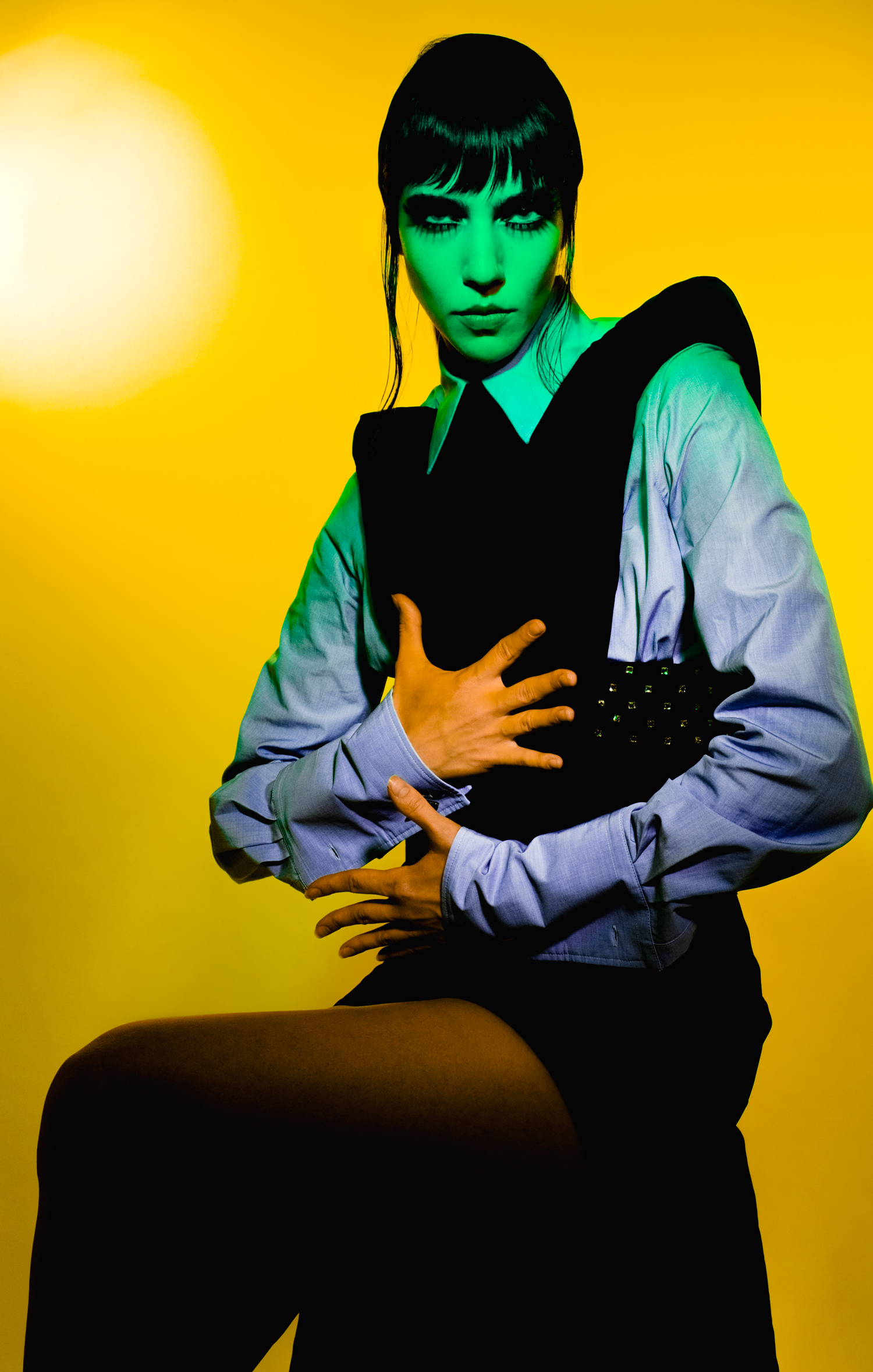
Dress by SAINT LAURENT BY ANTHONY VACCARELLO. Shirt by SALVATORE FERRAGAMO. Headband and Tights STYLIST’S OWN.
Step 5: Shoot your crystals with lasers. The X-rays will pass through them and give you a diffraction pattern somewhat resembling a Magic Eye. This is the atomic info that you’ll need for the next step…
Step 6: Which is to model your genes and fold them neatly. Plug the newly acquired atomic fingerprint of your protein bound to its target into an appropriate modeling software. Keeping in mind important factors such as side chains and hydrophobicity, you’ll soon be looking at a properly folded 3D model.
Step 7: Now that you’ve solved the molecular structure of your protein-target complex, you can determine necessary shape changes that can help the immune cell do its job better when interacting with a specific molecule. Immunotherapy is developed by designing new and improved complexes, so play around with spaces and side chains, and strive for that perfect lock-and-key fit. Unleash complex 2.0 and let the healing process begin.
———
Hair: Dara Allen
Makeup: Michaela Bosch
Casting: Establishment Casting
Fashion Assistant: Julian Negron


